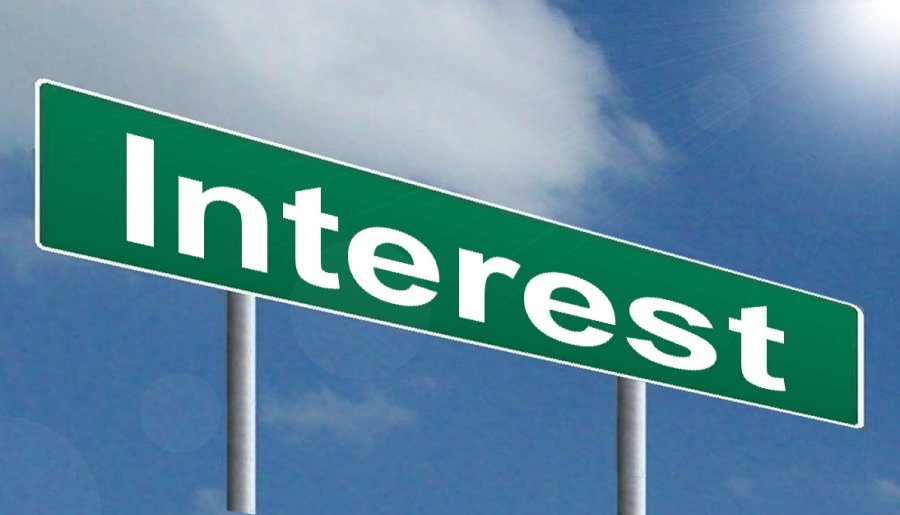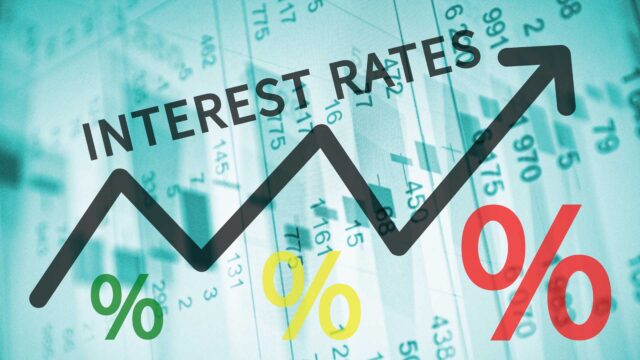What Are Interest Rates?
An interest rate is the fee charged for borrowing funds from a borrower, usually expressed in percentages of the loan amount. The lender is the one who charges the borrower while the borrower is the one who pays back the lender. Loans do allow for borrowers to pay an additional amount over time, this interest rate affects how much more credit is ultimately paid for. 奥
Key Types of Interest Rates:
Fixed Interest Rates: These don’t change throughout the repayment duration making the amount payable every month relatively constant.
Variable Interest Rates: Usually depend on the present state of the economy. Their values may be quite higher than the fixed counterparts or much lower.
Annual Percentage Rate (APR): The total cost of the loan- including both the interest and additional costs which relate to other services attached to the loans made.
How Interest Rates Are Determined: Interest rates are not immune to market influences. These include: Actual market activities like. Economic Conditions. The central banks manage interest rates; the benchmark interest rates are used as a mechanism to control inflation and manage economic growth.
Creditworthiness. Borrowers are usually rated based on their credit scores and credit histories for individual credit borrowers. If a credit borrower has higher credit points this may lead to less interest rates. Loan Type and Term. Different types of loans and repayment periods presents different ways of interest rates structure.
“By grasping the forces that affect interest rates, borrowers are in a position to enhance the financial decisions they are obligated to take.”
Affect of Interest Rates on Loan Repayments
The amount which a borrower is to pay each month and in their lifetime will also be influenced by the rate of interest charged on the money lent to them. For instance, high-interest rates lead to high repayment while low-interest rates reduce the cost of borrowing.
| Loan Amount | Interest Rate | Monthly Payment (30 years) | Total Cost of Loan |
|---|---|---|---|
| $250,000 | 4.0% | $1,193 | $429,674 |
| $250,000 | 6.0% | $1,499 | $539,639 |
| $250,000 | 8.0% | $1,834 | $660,122 |
Variable vs. Fixed Interest Rate: The Decision: While taking a loan, pupils mostly have to choose between two kinds of interest rates – variable or fixed. Every option has distinct advantages and disadvantages:
Pluses: All monthly payments are the same, as the borrower is not exchequer to market volatility.
Minuses: These are usually higher than adjustable rates at the outset and the borrower cannot take advantage of the falling rates.
Pluses: These are lower rates at the outset unless there is an increase in rates in the market.
Minuses: The amount to pay can change all of a sudden, more so the interference with the program makes it difficult to predict how much will be budgeted.
‘FIXED INTEREST RATES GIVE PEACE OF MIND BUT VARIABLE RATES GIVE THE CHANCE TO MAKE SAVINGS BUT HAVE MANY ISSUES HIGH’
There is a small list of financial instruments available which can be arranged according to their relation with the interest rates: The Mortgages. Interest rates are going to be the most important of them when thinking about how much the house is going to cost. The best feature of Ариоста mortgages is that they sell themselves cheap at the beginning, but unfortunately their time value increases as time goes by.
The Auto Loans the total cost, in fact, goes down through the interest rate which almost all borrowers with a top grade credit history have. Personal loans unsecured loans are known to be higher, in fact, the scope revolving around the credit available with any form of complication makes these dies more costly.
Credit Cards using these cards means that one can have a high interest if unable to clear every month, but paying off the whole balance prevents from high stepping interest.
How to Reduce the Interest Rate: As it is common knowledge paying one’s bill on time and decreasing one’s overall dues improves one’s credit score which is generally helpful. It is advisable to take shorter lengths as they often attract lower rates of interest. Prepay any outstanding dues as that will help with paying down the principal and cut down the overall interest.
The Bottom Line: One of the most dominant elements that determines how much a loan costs a borrower is the interest rate. Those applying for loans should read and understand the more difficult articles about the economy and how to deal with significant interest amounts. If you are aware of what everything means, it should be easy to manage your finances and get to where you want without unnecessary strains.

Analyzing Interest Rates
Interest can be defined as the rent that a borrower pays to the lender for making use of an owned resource. Resource capable of being owned includes cash, consumer goods, vehicles, and property. This enables owners that, for them the money has its price and it is equal to the interest rate. Higher interest rates make the repayment of the same principal amount more expensive.
Most borrowing or lending activities are accompanied by relevant interest rate charges. Individuals borrow funds for the purchase of houses, capital projects, business establishment or business expansion and even for school fees. Units or business organizations also borrow to invest in capital projects and also to acquire long term fixed assets like land, buildings, machinery and the like. The repayment of loans is done either in one off instalment by a certain date in the future or in small amounts periodically over a defined schedule.
When borrowing money, the person has to pay a specific amount which is known as the principal. The interest rate can also be regarded as the cost of borrowing for the borrower and income for the lender. Therefore, the actual amount of money that needs to be paid back is more than what was actually borrowed. This is so since the lender lost the opportunity to use their funds for investments for the period of the loan, hence the loan has to be repaid with some additional fees. Thus, the disparity between the amount owed in total to the lender and the amount of the loan extended is the amount of interest charged.
Typically, when a lender classifies the borrower as low risk, a lower interest rate will apply to the borrower. On the other hand, when a borrower has been classified as high risk, the borrower will attract higher interest rates which will lead to a higher cost loan. Risk is most often evaluated where a lender attempts to assess the credit of a potential borrower which means in order to obtain the most beneficial loans you need to have a top credit score.
Simple Interest Rate
For example, if the bank gives out a loan amount of $300,000, and the loan has been taken out on the simple 4 percent interest rate basis, then the borrower will have to refund the banker the amount of loan taken, that is, $300,000 and the simple interest earned at the end of the tenure – $300,000 + 12% of $300,000, which will be $312,000. The formula used in computing the above example we know that the simple interest is calculated on a per annum basis simple interest:
Simple interest = n x p x r : In such a case, the borrower will be able to repay only 12000$ at the end of the year to the bank as interest, provided it is a one year specific loan agreement of lending. In the case of the mortgage in case of 30 years to come – then the simple interest will be as shown:
Simple interest = 300,000 x 4% x 30 = 360,000: When a loan is given a simple annual rate of interest of 4 percent it means that each year the borrower pays 12,000 dollars. After thirty years, the person borrower will have paid a total of XXX dollars which is simply the simple interest of 12000 x 30 years = 360000 dollars, and that is even a 4 percent payment in simple interest, hence explaining how the banks sustain through the lending, mortgage and other such related matters.
Compound Interest Calculations for Growth: In a way, some lenders encourage the practice of using a compound interest method since that means the borrower pays even more in terms of interest. The interest which may also be defined as ‘interest upon interest’, is charged on the principal amount plus all the previously earned interest as well. For example, at the end of the first year, a bank imagines that the debtor has already paid back the initial amount plus the interest due to them for that year. Likewise, it’s also true that at the end of year two, the institution knows the borrower still owes the principal amount earned during the first year plus all the interest earned during the first year.
When compounding, the amount of interest that is owing is greater than the amount of owing used in the simple interest method. Interest is assessed monthly based on the principal and interest from the prior months. When terms are shorter, the interest scenario will be similar between both methods. However, however, as the duration of lending increases, the difference between the two types of interest calculations widens.
FAQs
What is the effect of higher interest rates on existing loans?
The fixed rate loans are unaffected but the variable rate loans will be paid at higher rates due to increased payments.
Am I entitled to refinance my loan to adjust the interest rate?
Yes, borrowers can always benefit from refinancing but this will come with additional costs.
What is the method of total debt obligation calculation?
An online dedicated loan repaying calculator can be used or the formula can also be used: Total Cost = Principal + (Principal × Interest Rate × Term).







